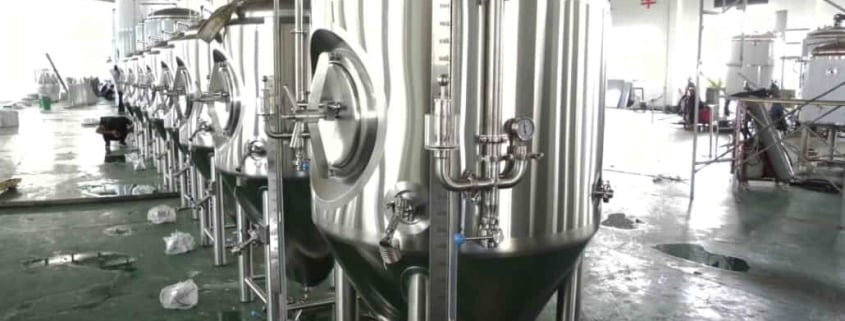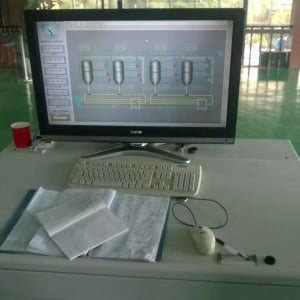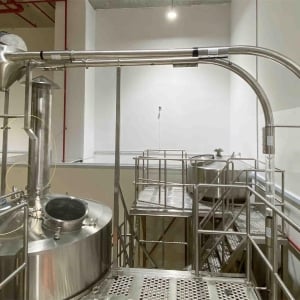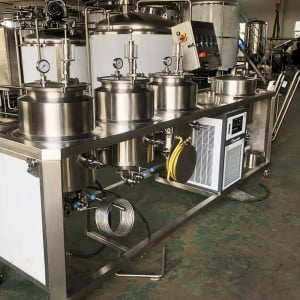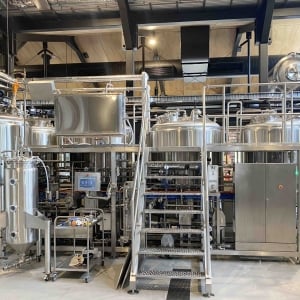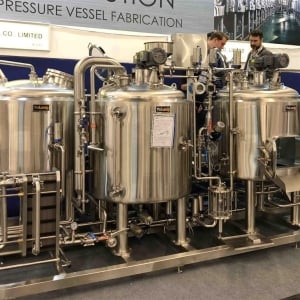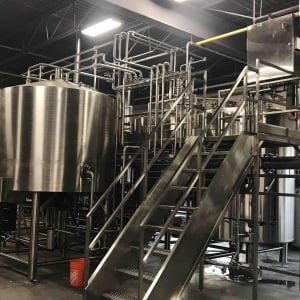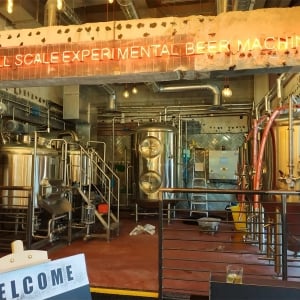Overview of 3 BBL Fermenter
3 BBL Fermenters are a common size for nano and microbrewery operations. Matching fermentation capacity to brewhouse size allows efficient beer production workflows.
This guide covers key considerations in selecting, designing, installing and operating 3 BBL Fermenter – variables that impact quality, throughput and scaling capacity cost-effectively.
Types of 3 BBL Fermenter
Standard 3 BBL fermenter vessels choices:
| Type | Details |
|---|---|
| Conical Fermenters | Cone-shaped bottom collects yeast for easy removal. Accessories like cooling, carbonation. |
| Cylindroconical Fermenters | Hybrid allows some yeast removal. Conical add-on option. |
| Unitanks | Combined fermentation and conditioning tank. One vessel beer processing. Customizable. |
| Open Fermenters | Simple design usually square or circular. Cannot remove yeast easily. Lower cost. |
Conicals and cylindroconicals allow yeast handling benefits but higher capital costs. Open top fermenters provide basic functionality at lower prices. Unitanks offer flexibility through integrated processing.
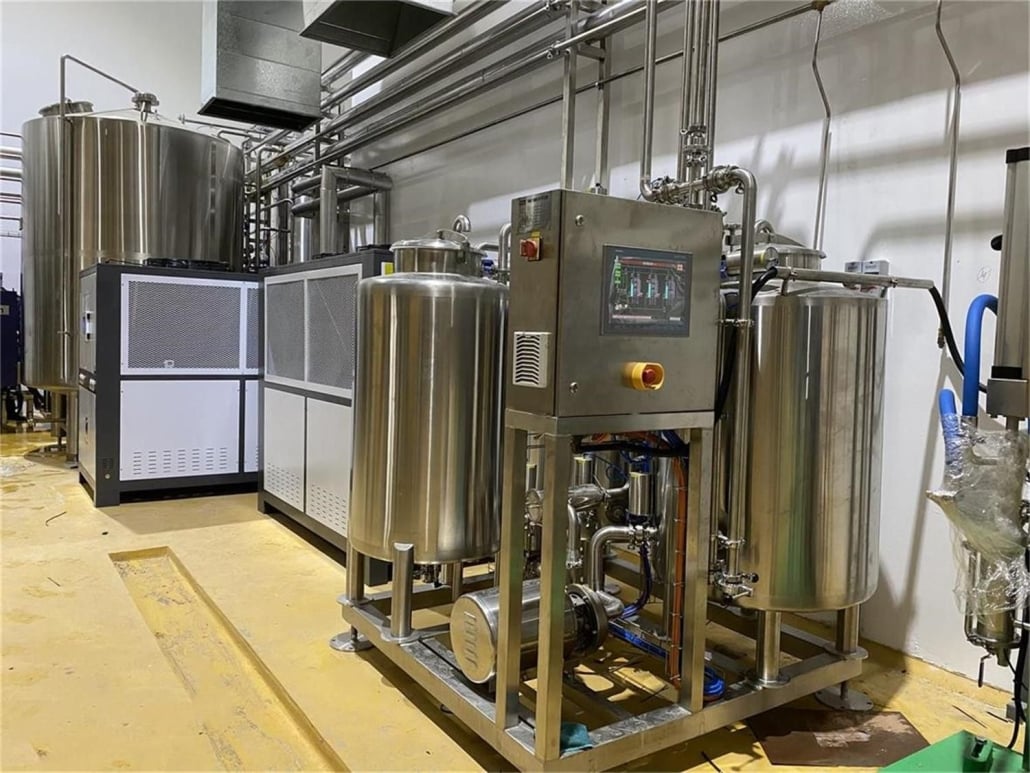
3 BBL Fermenter Design Factors
Key design considerations for 3 barrel fermenter systems:
| Parameter | Recommendations | Customization |
|---|---|---|
| Dimensions | 24-36″ diameter, 84-96″ straight side height typical | Varies with aspect ratio, conical bottom design |
| Material | Stainless steel (304, 316L) | Choose finish, thickness, insulation |
| Volume | Adjust to match brewhouse batches & yeast pitching rates | 2-4 turns weekly ideal utilization |
| Cooling | Glycol/steam jackets; cooling coils; chilling units | Balance cost, precision and response times |
| Temperature Control | Automated PID controllers | Set multi-step profiles, alarms, monitoring |
| Pressurization | Pressure rated up to 15 PSI | Certify >5 PSI for reliable carbonation |
| Yeast Handling | Blow-off lines; carbonation stones; yeast dump valves | Level of automation vs manual operation |
| CIP Systems | Spray balls; cleaning heads; foam retention basket | |
| Other features | Thermowells; stands; racks; walkways; stairs |
Fine tune fermenter design and functionality based on existing infrastructure, beer types, production targets and budget.
3 BBL Fermenter Sizing
Properly size the fermentation system to match brewhouse capacity:
- For a 3 BBL brewhouse, have 10-15 BBLs total fermentation volume
- Allows 2-4 turns per week with proper yeast pitching and turnover
- With 12 BBLs fermentation space, produce 1250 bbls annual output from a 3 BBL brewhouse
- Scale horizontally adding more 3 BBL fermenters as needed
- Budget $2000-$4000 per barrel of fermentation capacity
Inadequate fermentation space bottlenecks beer output. Optimize vessel utilization through workflow scheduling before expanding.
Buying New 3 BBL Fermenters
When investing in new 3 barrel fermenter systems, buyers evaluate:
| Consideration | Details |
|---|---|
| Price | $6000 – $12000 per 3BBL fermenter |
| Lead Times | 14-18 weeks from order to delivery |
| Vessel Choices | Conical, cylindroconical, unitanks, open tops |
| Fabrication | Stainless steel grade and finish quality – 2B, electropolish etc |
| Cooling Systems | Glycol, steam, chilled water; cooling jackets vs internal coils |
| Automation Level | Manual operation vs automated temperature controls, monitoring etc |
| Customization | Modified dimensions, addition of carbonation stone, yeast dump etc |
| Warranties | Workmanship, parts replacement, service response terms |
Get multiple quotes. Choose balance of functionality, quality and budget fitting current and future production based on market research.
Buying Used 3 BBL Fermenters
Used and reconditioned fermenters can significantly reduce startup costs:
Sourcing – Check online listings regularly for availability. Be ready to act quickly if finding a functional used 3BBL system.
Evaluation – Carefully inspect vessel interiors and exterior for damage. Review maintenance logs if possible.
Refurbishing – Budget cleaning, passivation, cosmetic touch ups, replacement of worn parts like cooling jackets, fittings, gaskets etc.
Pricing – Condition significantly impacts used market value. Expect to pay 40-60% of a new 3 BBL fermenter if no major issues.
Transportation – Coordinate equipment dismantling, rental trucks for pickup and professional re-installation.
Testing – Validate cooling precision, pressure rating, seals etc before starting fermentation.
Though used vessels need more upfront effort, they can kickstart profitable 3 BBL brewery operations on a tight budget.
Popular 3 BBL Fermenter Manufacturers
Among the many 3BBL fermentation tank suppliers across the United States:
| Brand | Description |
|---|---|
| [Brand 1] | Leading US manufacturer of uni and conventional fermenters for craft breweries |
| [Brand 2] | German engineered stainless steel conical and unitank import |
| [Brand 3] | Custom fabrication from Oregon specializing in high quality finishing |
| [Brand 4] | Budget, made in China import conicals and open fermenters |
Also research local stainless steel fabrication shops able to make simple open or closed 3 BBL fermenters at reasonable costs from scratch per your specifications.
Installing 3 BBL Fermentation Tanks
To safely install 3 barrel fermenters:
- Space Planning – Arrange vessels conveniently for transfers but allow operator movement. Mark locations.
- Flooring – Reinforced concrete to support heavy loads. Slope gently to drains.
- Lifting & Positioning – Use jacks, lifts or rigging beams operated by qualified technicians to place vessels.
- Anchoring – Bolt conicals securely to stands. Brace cylindrical tanks. Ensure stability before use.
- Platforms – Install sturdy catwalks and stairs for top access on stacked fermenters.
- Plumbing – Connect cooling lines, glycol piping, electrical for temperature controllers and sensors.
- Commissioning – Clean and passivate tanks. Calibrate valves and instrumentation. Verify seam welds.
Safety – Confine space training. Warning signs. Emergency stop buttons.
Leave no shortcuts – professional installation prevents damage and enables safe operations.
Operating 3 BBL Fermenters
Consistent procedures operating 3 barrel fermenters maximize quality:
Cleaning – Follow CIP protocols before yeast inoculation to avoid contamination
Wort Transfer – Carefully move cooled wort from whirlpool vessel into fermenter. Aerate thoroughly.
Yeast Pitching – Ensure viability of correct yeast strains and precise pitching rates. Document cell counts.
Monitoring – Track density, temperature and yeast activity daily through fermentation. Log fermenter conditions.
Temperature Control – Maintain optimum profile over full fermentation cycle from active primary fermentation to conditioning phase.
Sampling – Pull taste samples aseptically to check flavor profile development and make recipe adjustments.
Yeast Handling – Remove yeast on schedule for harvesting or disposal. Follow safety procedures.
Hygiene – Strict sanitation between fermentation turns in all vessels, fittings and transfer hoses.
Consistent fermentation protocols result in clean, flavorful beers with the desired characteristics reliably batch after batch.
Maintaining 3 BBL Fermenters
To sustain performance and longevity of 3 barrel fermentation vessels:
- Gaskets – Replace door seals, lid gaskets and o-rings annually
- Welds – Inspect internally and externally for cracks or pits annually. Repair immediately.
- Pressure Test – Validate mechanical integrity and leaks above maximum pressure rating biannually.
- Valves – Actuate valves regularly. Rebuild sticky valves preventing wort and yeast flow issues.
- Instrumentation – Calibrate temperature sensors and density meters every 2-3 months for precise control.
- Cleaning – Descale tanks with acid cleaners quarterly. Inspect spray balls and CIP heads.
- Coatings – Re-passivate stainless steel periodically to prevent corrosion especially if caustic cleaning frequently.
Prevent issues through proactive maintenance – avoid stuck fermentations or contamination during peak brewing season.
Choosing Fermenter Manufacturers
Factors to consider when selecting fermentation tank suppliers:
Technical Expertise – Experienced engineering and stainless steel fabrication specializing in brewery vessels from simple to sophisticated automation.
Platform Offerings – Range of fermenter types and volumes using quality materials to suit current needs and future growth.
Manufacturing Standards – Consistent workmanship and finishing. Passivation, electropolish options. Verifiable sanitary welding procedures.
Customization Skills – Offer variety of fittings and accessories like cooling or carbonation upgrades tailored to needs.
Quality Control – Thorough inspection, cleaning, testing and documentation of vessels before shipping.
Services – Provide transportation coordination, site preparation advice and installation guidance.
Warranties – Clear coverage terms on both components and labor issues. Check service response reputation.
Evaluate company engineering competence, manufacturing standards and services when investing in new or used fermentation vessels.
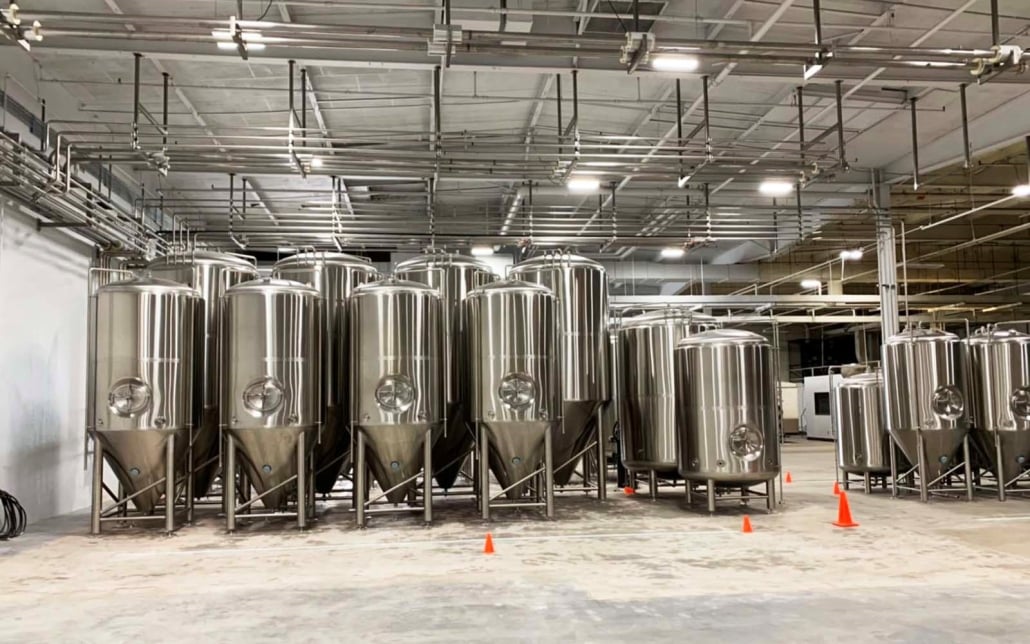
Key Fermenter Supplier Comparison Factors
| Parameter | Importance |
|---|---|
| Reputation & Experience | High |
| Platform Scalability | High |
| Price for Quality Ratio | High |
| Lead Time | Medium |
| Customization Range | Medium |
| Automation Sophistication | Low |
| Warranty Coverage | High |
| Installation Support Services | Medium |
FAQ
Q: What size batch can a 3BBL fermenter handle?
A: A 3 barrel fermenter can effectively ferment a standard U.S brewers barrel batch of 31 gallons or 117 liters, allowing about 15% headspace. Some oversize a 3BBL tank closer to 4-5 barrels capacity.
Q: How many 3BBL fermenters are needed for a 3BBL brewhouse?
A: For a 3BBL brewhouse, have 10-15 barrels total fermentation capacity. So about 4 to 5 units of 3BBL fermenters is recommended to allow 2-4 turns weekly and smooth workflow.
Q: Can 3BBL fermenters be stacked?
A: Yes, 3 BBL conical and cylindrical fermenters can be safely stacked up to 2 high using stands. Ensure the floor can support the total weight load per square feet. Install rails, cages and platforms for safe operations.
Q: What temperature range can 3BBL fermenters support?
A: Most 3 BBL fermenters cool down to 32-34°F for cold crashing and carbonating if needed. Heating ranges vary more widely from ambient up to 80°F though usual maximum fermentation temperature needed is 68-72°F.
Q: How much do new vs used 3BBL fermenters cost?
A: New 3 BBL fermentation tanks cost $6000 – $12,000 each installed. Used reconditioned 3BBL vessels average $2500 – $7000 depending on type, configuration and refurbishment needed.
Q: How long do 3BBL fermenters last?
A: Well maintained stainless steel 3 barrel fermenters have a typical lifetime of 15-20 years in commercial production settings. Replacing cooling jackets, valves and gaskets can extend lifespan further.

